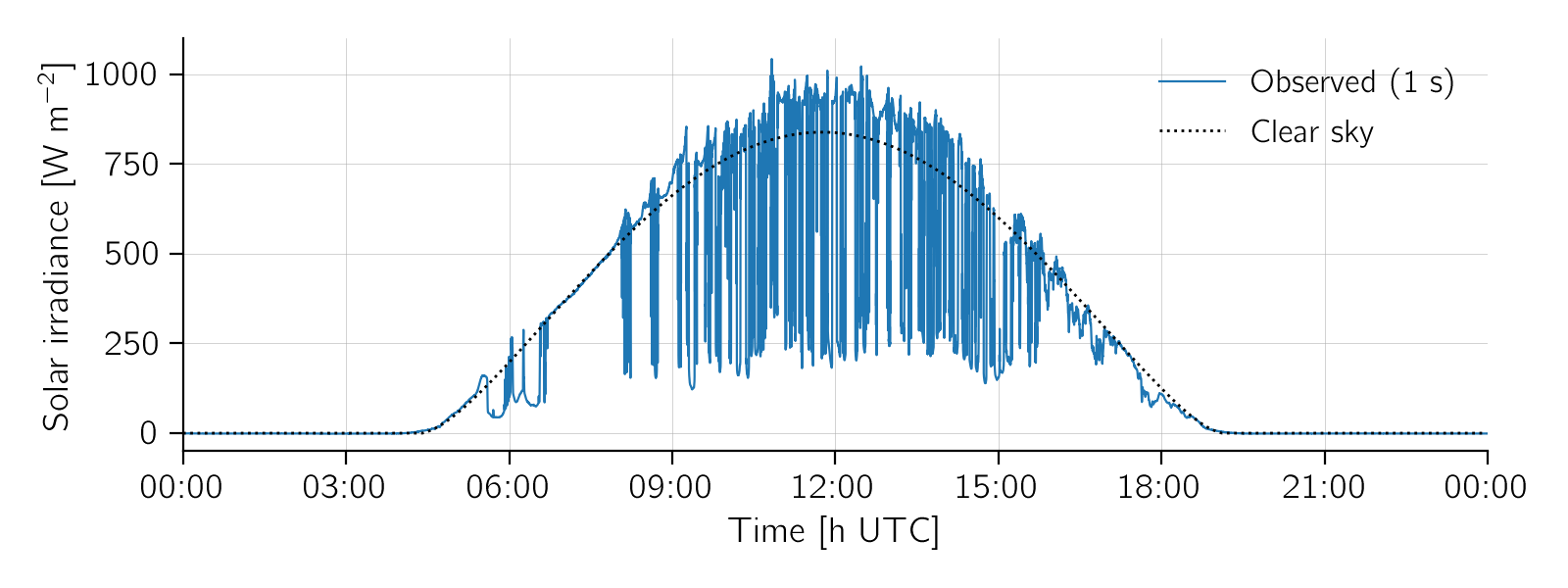Thesis topics

Our research group provides BSc- and MSc-thesis topics in the following themes for Wageningen University students. Currently, we have topics available in the themes below, that align with ongoing projects.
Clouds and solar energy
Within the Shedding Light On Cloud Shadows project we analyse field observations of incoming solar radiation and clouds in order to understand the peaks and dips in surface solar irradiance that are the results of clouds. As the figure below shows, clouds do not only create shadows, but also peaks in irradiance as a result of reflection of lights on clouds. These peaks we do not understand well, and we aim to learn more about their properties. This understanding is crucial for the incorporation of more solar energy into our electricity grid.

Potential thesis activities:
- Data analysis of radiation and cloud observations
- 3D simulation of cumulus clouds with MicroHH
- Data analysis of NWP data for solar energy production
- 3D simulation of land surface-radiation-cloud interactions
- Machine-learning emulators for radiative transfer models
Tropical convection and climate sensitivity
Deep convection in the intertropical convergence zone (ITCZ) is a key component of the global climate. Due to the large area of the tropics, it plays a major role in the radiation balance of the earth. In addition, it is the engine of the large-scale circulation. NWP and climate models have large problems in getting the properties of the ITCZ correct, because the clouds are much smaller than the grid size of the models and therefore need to be parameterized. Also, microphysics play a key role as the radiation balance is closely coupled to the properties of cloud droplets and ice chrystals.
With 3D simulation models such as MicroHH it is possible nowadays to simulate deep convection at a very high detail level and use these simulations as a virtual laboratory. The animation below shows the formation of deep clouds and the associated precipitation.
Potential thesis activities:
- Sensitivity study of RCE to microphysical properties (conversion between vapor, liquid, ice, snow, graupel, and rain)
- Sensitivity study of RCE to sea surface temperature
- Understanding organization of cloud clusters over time
Atmospheric fluid dynamics
Atmospheric fluid dynamics and convection are a shared theme among all topics. If you are interested in the fundamentals of atmospheric flow, we can offer you topics ranging from small scale convection to global circulation. These projects are always centered around the question: why is the atmosphere behaving like it is?
Potential thesis activities:
- Understanding the fundamentals of turbulent flow from 3D simulations
- Machine-learning parameterizations for turbulent transport
- 3D simulation of interactions of convection with baroclinic instabilities